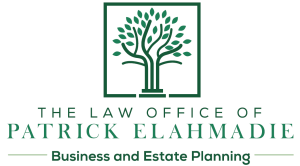The Ins and Outs of Estate Planning
 (Jan. 19, 2025) —Getting your affairs in order goes beyond a simple will.
(Jan. 19, 2025) —Getting your affairs in order goes beyond a simple will.
Probate, the court-mandated process for determining asset distribution after death, is the last thing you’d want your loved ones to endure during their grieving period.
If you die without an estate plan, the state assumes control – making decisions about who inherits your assets, when and how much it will cost. This process can last a year or more and be expensive, incurring 2%-4% of your estate value in attorney’s fees, executor fees and court costs.
It’s also public, leaving no privacy for your loved ones. Moreover, it frequently results in distributions that don’t align with your wishes. And if you have minor children, the court will decide their care, potentially leading to foster care.
To regain control, the most effective course of action is to create your own estate plan.
The safest way to avoid probate is to establish a Revocable Trust and place sufficient assets within it so that the remaining assets outside the trust (i.e. your “estate”) fall below the probate threshold. Currently set at $184,000, it will increase to $300,000 on April 1, 2025.
The court considers all your assets, including the full value of your home, when determining whether this threshold is exceeded. For real estate, there’s an exception starting April 1, 2025, allowing a primary residence valued at or less than $750,000 to be transferred to beneficiaries without probate. However, your loved ones will still need to petition the court, potentially incurring the same or more costs as creating an estate plan while you were alive.
A Revocable Trust offers numerous additional advantages, including memorializing your specific wishes and providing for individuals not included in the state’s plan.
In addition to a Revocable Trust, your comprehensive estate plan should include other essential documents such as a Pour-over Will, a Durable Power of Attorney and an Advance Healthcare Directive.
A will is a set of instructions that outlines how your assets should be distributed after your death. A Pour-Over will instructs the executor to transfer all assets to the trust. It may also include specific wishes, such as “I want my jewelry to go to my daughter.”
A Durable Power of Attorney and an Advance Healthcare Directive address who may act on your behalf in case of incapacity. A Durable Power of Attorney handles financial decisions, while an Advance Healthcare Directive deals with healthcare decisions.
Other commonly included documents in an estate plan are a Certification of Trust, which allows banks to open an account in the trust’s name, and one or more Quitclaim Deeds, which transfer real estate into the trust’s name.
For DIYers or those opting for cheaper estate planning options, a common pitfall is that these services often fail to prepare and file the Quitclaim Deeds, leading to an unfunded trust. This oversight requires an additional court filing to transfer the real estate into the trust, ultimately resulting in costs that can be as high as or even higher than the entire estate plan.
Even if you have an estate plan in place, it’s advisable to review it periodically to ensure it still aligns with your wishes and reflects any changes in the law since its creation. Many older trusts were drafted based on outdated laws, resulting in unnecessary administration fees and adverse tax consequences for your loved ones.
To learn more about estate planning and to discuss your estate plan, reach out today at 925-401-5096 or patrick@elahmadielaw.com for a complimentary 30-minute consultation.

